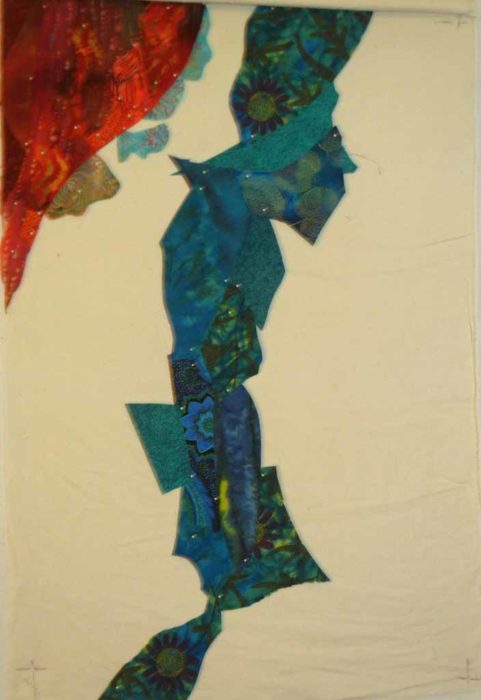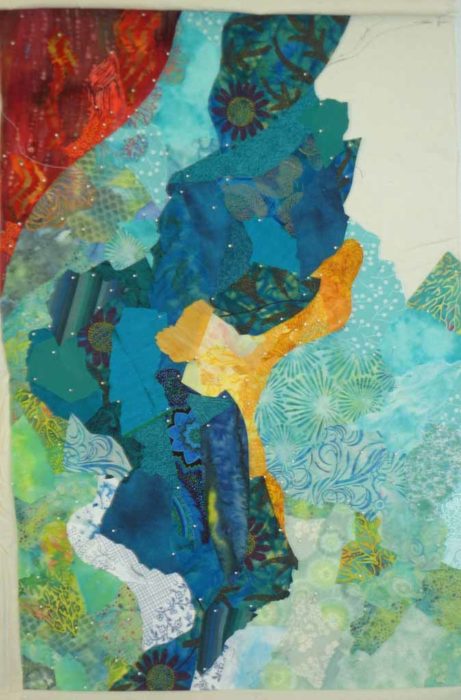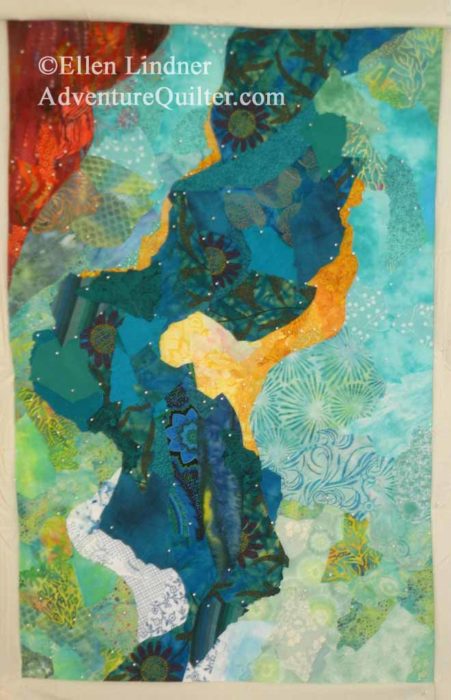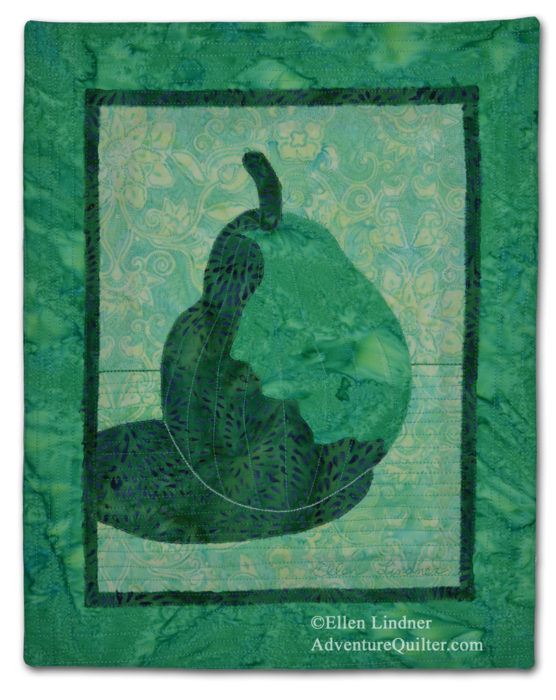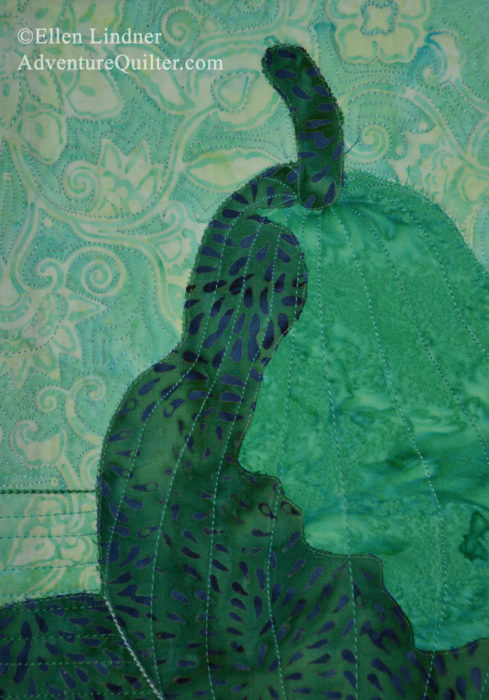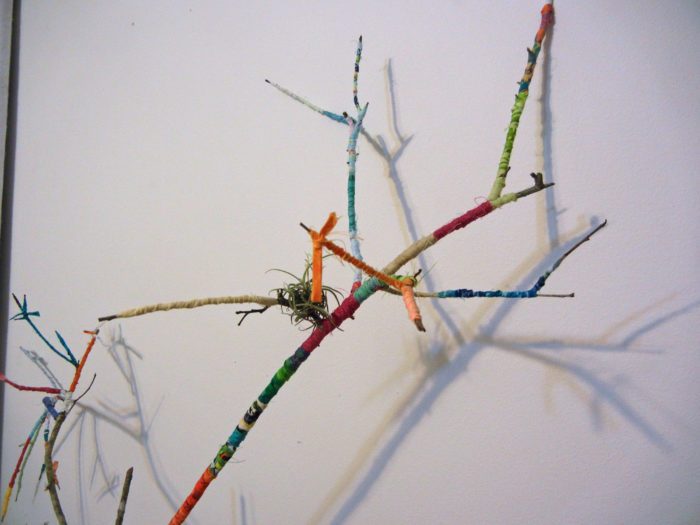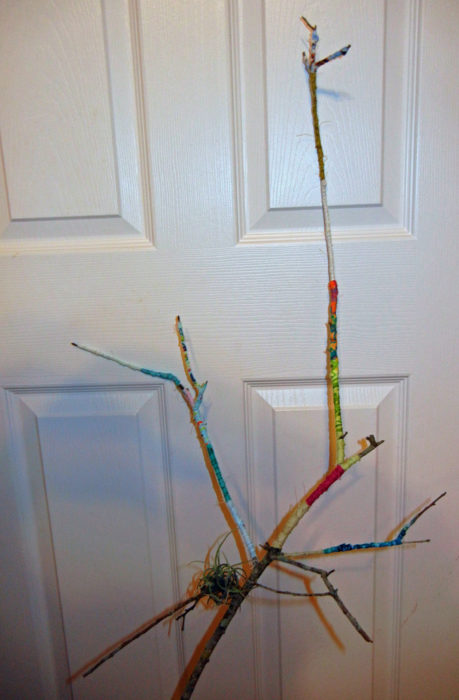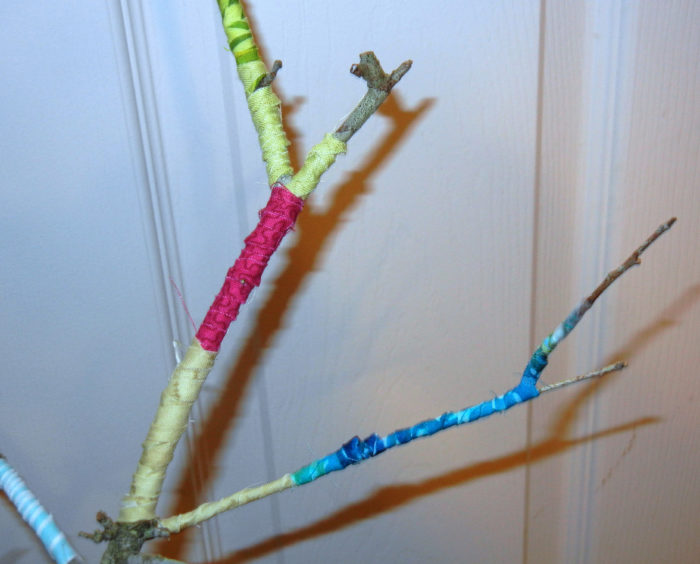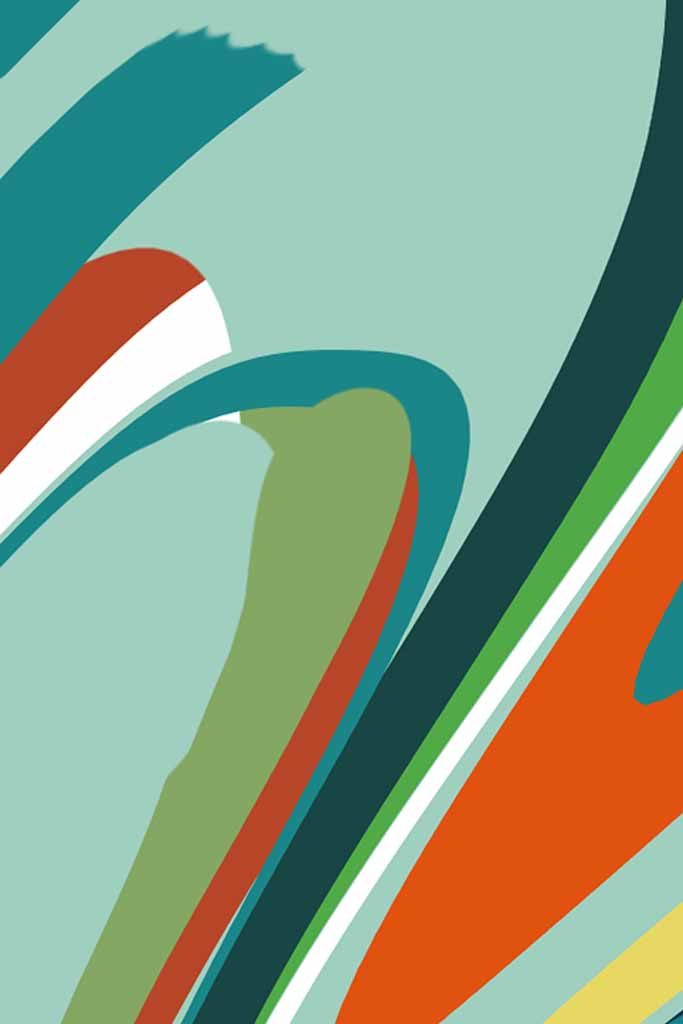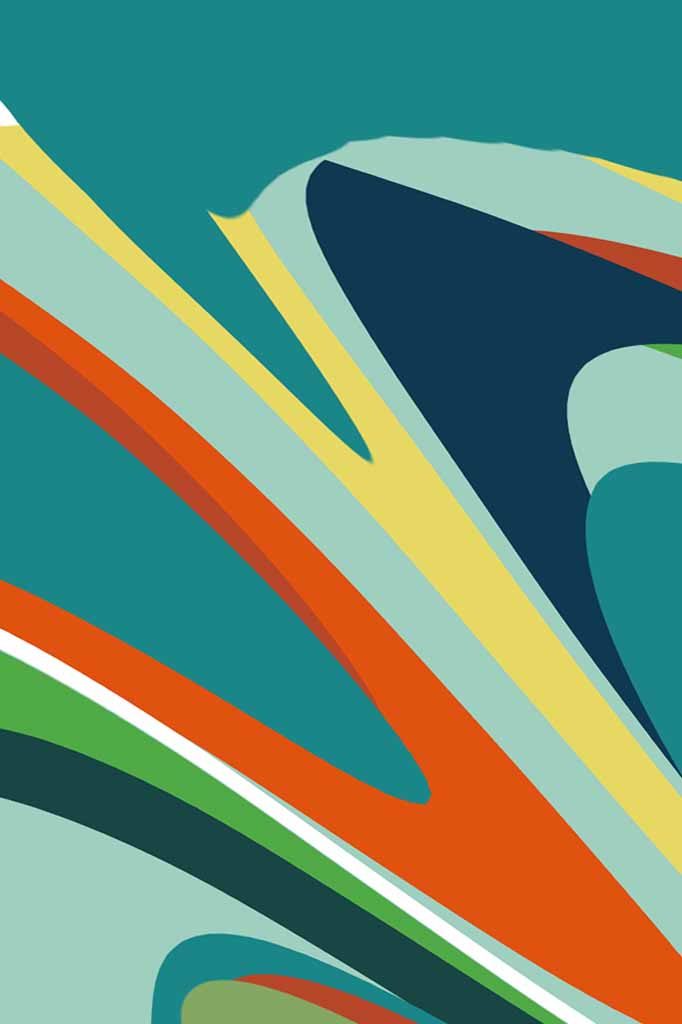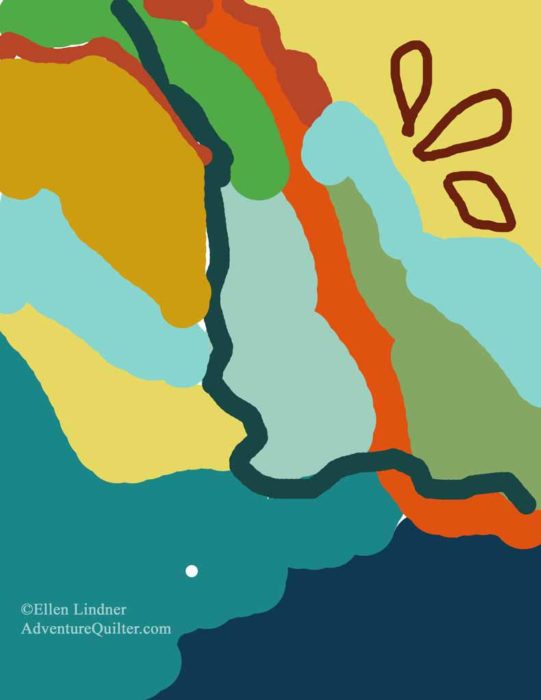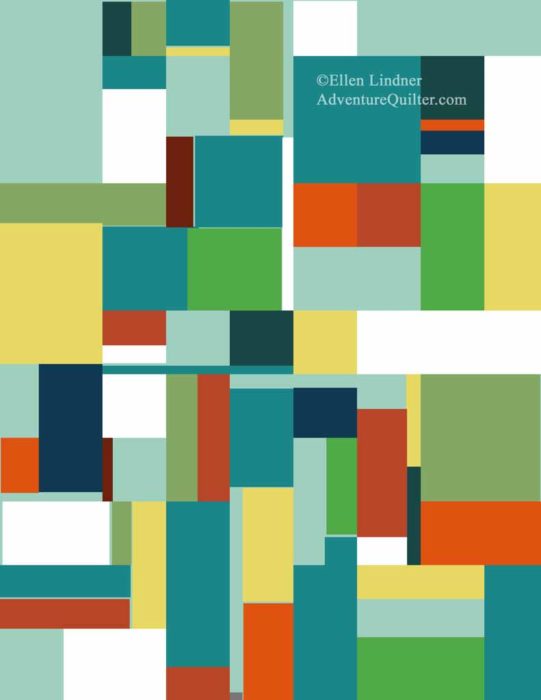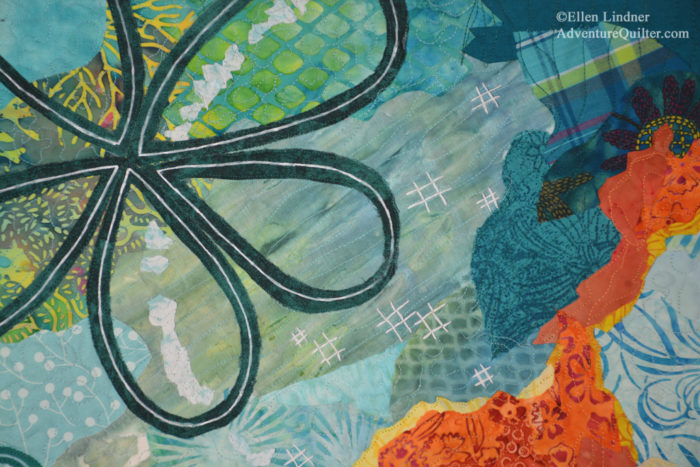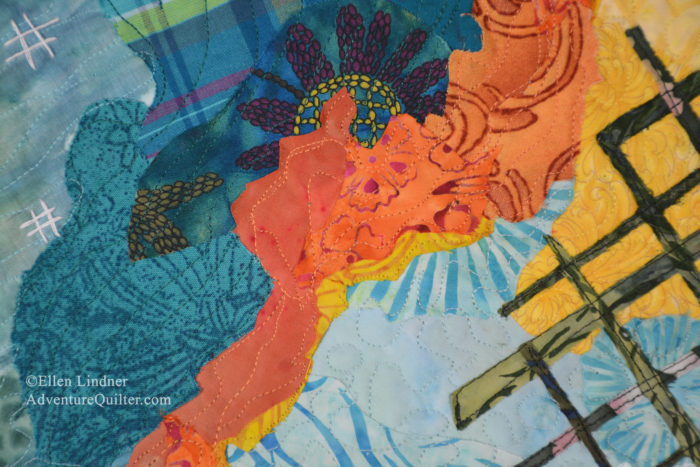You wouldn’t think that three galleries of “head shot” portraits would be that interesting. But, it really was. In the hands of painter Ray Turner, each person not only looks different, but in many cases, their personalities shine through.
This grouping was on the main wall at the Foosaner Art Museum, in Melbourne, FL.
Can you see how the background colors shift slightly?

As with every exhibit he does, the center column and center row are portraits of local “celebrities” and museum personnel. The very center portrait is of Anthony Cantanese, the outgoing president of our local college. To the left are his wife and the incoming president. You get the idea.
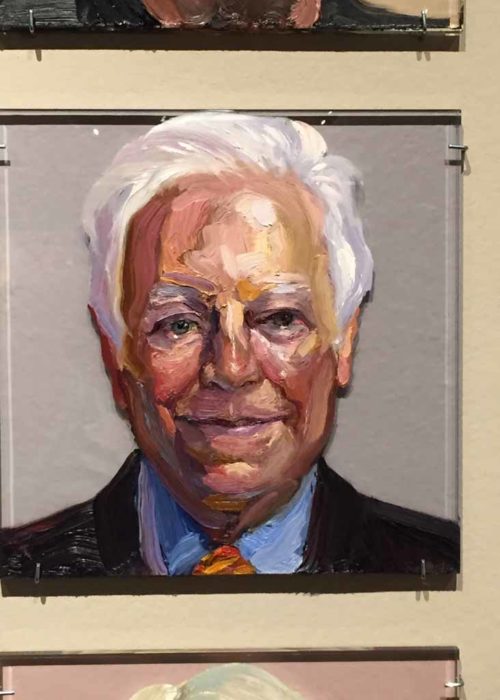
The portrait below was photographed from several feet away.

It was intriguing to come in close and notice the details. There was quite a bit of texture in the paint. Also, because each portrait was painted on special glass that’s 3/8″ thick each one had an unexpected depth, as well as a shadow.
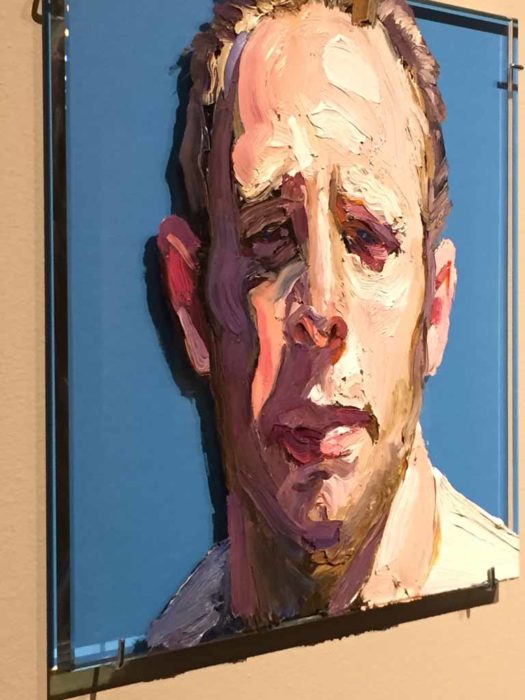
The artist also experimented with how little information he could provide and still have the face be recognizable.
He tried one with no color.
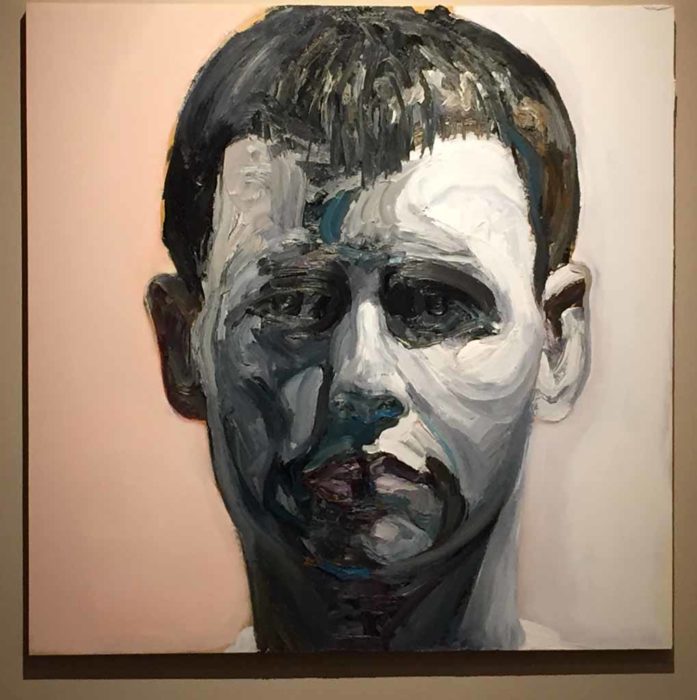
And another with just a little yellow.

Could you tell that both of those last two were the same person? I’ll bet you could. It’s amazing how little information is really needed to convey an idea.
I always enjoy a visit to an art museum. I hope you’ve been able to visit one or two this summer.
Ellen Lindner


